Scaling product development sounds deceptively simple, doesn’t it? Just hire more developers, write more code, and ship more features. However, my experience has taught me that scaling is far more complex than merely increasing headcount. It’s about constructing a robust system that can grow effectively, and that’s where many organisations stumble.
The Reality of Scaling
As I’ve observed in various organisations, when you attempt to scale without addressing the underlying system, communication begins to fray. Teams can easily get out of sync, and constraints emerge. Instead of accelerating delivery, you may find that it slows down. The irony is that the more you scale, the worse the situation can become.
So, why is it so challenging? The crux of the issue lies in the fact that most organisations focus on adding people rather than fixing the system. When the system is flawed, simply throwing more people at the problem only magnifies the ineffectiveness.
Key Challenges in Scaling
Here are some of the critical challenges I’ve encountered when scaling product development:
- Lack of Alignment: Teams often lack clarity on priorities. Instead of achieving speed, you end up with wasted effort.
- Technical Debt : If technical debt isn’t managed, every new feature becomes increasingly difficult to ship. This can lead to frustration and burnout among developers.
- Slow Feedback Loops: When feedback loops are sluggish, poor decisions linger, compounding the problem and making it harder to pivot when necessary.
The Path to Effective Scaling
To scale effectively, it’s essential to address these issues first. Here’s what I recommend:
- Create Clarity: Ensure that everyone understands the priorities and goals. This alignment is crucial for maintaining momentum.
- Reduce Friction: Identify and eliminate bottlenecks in your processes. Streamlining workflows can significantly enhance productivity.
- Enable Quick Movement: Foster an environment where teams can operate swiftly without tripping over each other. This requires a culture of trust and open communication.
Enter Naked Agility
This is where the concept of naked agility comes into play. At Naked Agility, we specialise in helping organisations build systems that genuinely scale. Our approach ensures that teams remain aligned, delivery stays smooth, and adding more developers translates to faster results rather than increased complexity.
If you’re grappling with these scaling challenges, I invite you to reach out. Scaling doesn’t have to be a painful experience; with the right approach, it can be a seamless transition that propels your organisation forward.
In conclusion, remember that scaling is not just about numbers; it’s about creating a sustainable system that supports growth. By focusing on alignment, managing technical debt, and fostering quick feedback loops, you can set your organisation up for success. Let’s work together to make scaling a positive experience!




























